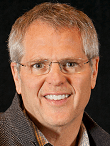4 Keys To Bridging The Biosimilar Gap: Transforming Awareness Into Prescribing Action
By Bruce Feinberg, D.O., Cardinal Health Specialty Solutions

In the past two years, nine biosimilars have been approved by the FDA, three for use in cancer patients and six for use in patients with inflammatory arthritis and inflammatory bowel diseases.
Despite the fact that many practitioners have never prescribed a biosimilar, awareness of this emerging drug class is strong and growing. According to a 2017 survey of 200 community oncologists conducted by Cardinal Health Specialty Solutions, only 17 percent of participating physicians said they were unfamiliar with biosimilars. This is an improvement from the year prior, when 22 percent indicated lack of familiarity.
A number of factors are likely leading to this growing awareness. In the past several years, we’ve seen a myriad of published literature confirming the efficacy of biosimilars. And as more products have earned FDA approval, we’ve seen increased dialogue about biosimilars at medical congresses and international meetings.
In addition to growing awareness, the survey found wide acceptance of the FDA’s process for evaluating biosimilars. Almost 80 percent of participating physicians stated they were comfortable with the approval process for biosimilars, while only five percent said they thought the FDA was rushing biosimilars through the process.
Also encouraging, a strong majority of oncologists surveyed indicated a willingness to prescribe biosimilars across all reference brand label indications and therapeutic areas, regardless of whether the biosimilar is supportive care or therapeutic or whether it is a palliative treatment or used with curative intent. Such responses suggest the barriers to biosimilar adoption are much lower now than they were a year or two ago.
Despite these trends, biosimilars still face real barriers to adoption. Randomized clinical trials of biosimilars are limited to one indication and designed only to prove non-inferiority. Label expansion to all reference brand indications is made by extrapolation. And the FDA has not yet classified any biosimilars as being interchangeable with reference brands, as generic drugs are. Despite growing physician awareness of and willingness to prescribe biosimilars, these factors may lead to reluctance to prescribe, once the question moves from theoretical to the point of care.
That said, biosimilar developers can take several key actions to bridge the gap between awareness and action in 2018 and beyond.
- Place more emphasis on — and investment in — developing best-in-class commercialization plans. All pharmaceutical products require strong commercialization plans to succeed, but the need is more acute among biosimilars. Many biosimilar developers have placed strong emphasis on demonstrating efficacy and safety to win FDA approval. But regulatory success is just the beginning. Equal and early focus needs to be placed on creating commercialization plans that seek not just to respond to, but to shape, the dynamics of the market, while strategically communicating compelling product differentiation messages that resonate with all key stakeholders. Because biosimilars cannot demonstrate clinical superiority to reference brands, they must rely heavily on economic advantages. However even when prices of biosimilars are 10 to 20 percent lower than reference brands, physicians may still perceive barriers to switching. Having a strong commercial plan that addresses access, education and patient support can help to remove those barriers.
- Further strengthen patient and provider education efforts. Physician awareness of and comfort with biosimilars has grown considerably, but further progress is needed. Much of the work to date has understandably focused on patient advocacy groups, trade associations, and professional societies. As more biosimilars enter the supply chain, additional focus needs to be placed on education programs that broaden awareness and understanding of biosimilar therapies among providers and patients alike. Reference brands have invested heavily in marketing and education — and they each got a running start. Early patient and provider education investments will be key to convincing physicians to change their prescribing behavior.
- Collaborate with payers and providers to define cost structures and value equations. Among the many unknowns in the biosimilar market, the most significant is the value equation. In short, how much will each product cost, and how much value will each product deliver? The research from Cardinal Health Specialty Solutions indicates oncologists have high expectations of how much savings they hope to gain as a result of prescribing biosimilars — 66 percent of those surveyed said it is “extremely or very important to save costs when prescribing biosimilars.” Yet to date, the cost difference between most biosimilars and their reference products averages less than 20 percent.
When it comes to defining cost structures, biosimilar developers should reach out early to payers, both government and commercial, as well as providers and other stakeholders, to clearly articulate how their products can promote cost efficiency and sustainability within the healthcare system. Gaining consensus on the cost structure may be challenging because each stakeholder will expect to benefit, and providers and patients may be slower to adopt biosimilars if they perceive that all of the savings go to payers.
- Invest in patient support services. Biosimilar developers must also invest in patient support services that can drive improved outcomes and a better patient experience. These services may include patient education materials that help physicians make a compelling case to their patients, reimbursement programs that help patients navigate the often daunting process of working with payers, assistance programs that help patients apply for financial aid, and support programs that help patients manage side effects and maintain adherence to their therapy regimen. When choosing between a biosimilar and a reference product, providers will consider not only efficacy and costs, but also the patient experience. It’s important to make the necessary investments to ensure patient support services are on par with those offered by reference brands, so prescribers can be confident their patients will have a comparable experience.
Industry experts seem to agree that an uptick in biosimilar adoption is likely in 2018. The question now is: at what speed and scope will the change in prescribing patterns take place?
History tells us changes in physician attitudes and awareness don’t always correlate to a change in behavior at the point of care. And biosimilars also need to overcome clinical hurdles to provider acceptance — hurdles reference brands and generics don’t face. That makes it all the more important for biosimilar developers to focus on collaborating with key stakeholders to create a compelling value equation. It also means commercialization plans, provider education, and patient support services must be best-in-class if biosimilar developers truly aim to transform awareness into prescribing action.
About The Author:
 Bruce Feinberg, D.O., is VP of clinical affairs and chief medical officer for Cardinal Health Specialty Solutions, where he serves as a consultant with payers, providers, pharma, patients, and policy makers.
Bruce Feinberg, D.O., is VP of clinical affairs and chief medical officer for Cardinal Health Specialty Solutions, where he serves as a consultant with payers, providers, pharma, patients, and policy makers.
Prior to joining Cardinal Health, Dr. Feinberg was the founder and CEO of Georgia Cancer Specialists (GCS), one of the largest integrated oncology specialty practices in the U.S. At GCS, he pioneered health information technology, clinical pathways, and the oncology medical home.
Dr. Feinberg has made more than 70 peer-reviewed contributions to the value-based healthcare literature. He is the author of the bestselling book Breast Cancer Answers: Understanding And Fighting Breast Cancer and hosts The Weekly Check-Up on WSB Radio in Atlanta.
